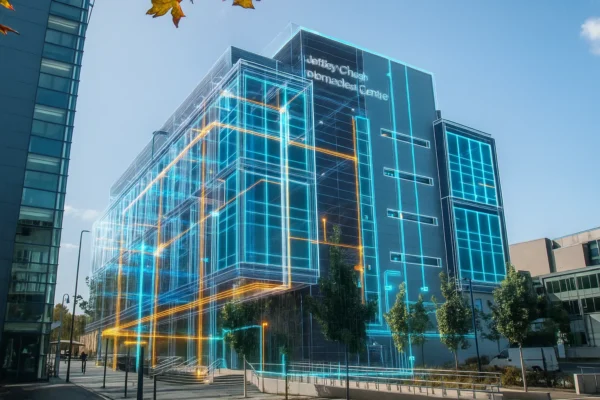Creating Communities: Barnsley West
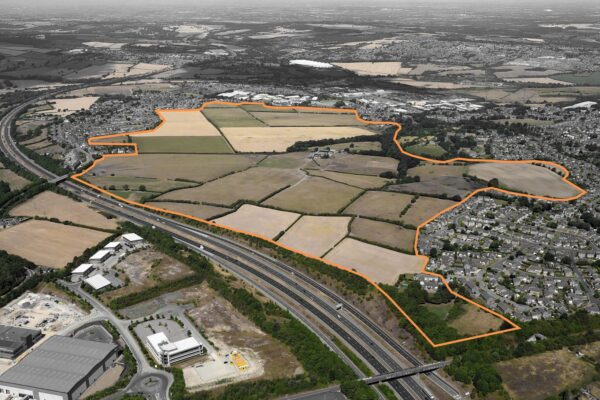
Over six years ago, Bond Bryan were selected for a unique project – to develop a design code that would shape the future of a plot in the heart of Barnsley. Now, with recent planning approval, these plans can be brought to life.
Barnsley West is a major new development that will shape a vital part of Barnsley’s future. We’re proud to have worked as lead masterplanners and, uniquely, as authors of the Design Code that will guide every element of the site’s future delivery. This over-half-a-decade journey produced a long-term vision shaped by ground-level research, community input, and a deep commitment to designing places that support both people and the planet.
The Barnsley West Design Code is not just a planning tool – it’s a framework for delivering high-quality placemaking and ensuring future development carries a deep commitment to the history, welfare, and needs of the broader community as it develops over time. The code provides detailed rules that will shape everything from the location of play spaces to the quality of window views. It’s a document that puts people at the centre of development decisions and ensures that Barnsley retains a safe and engaging neighbourhood – now and for decades to come.
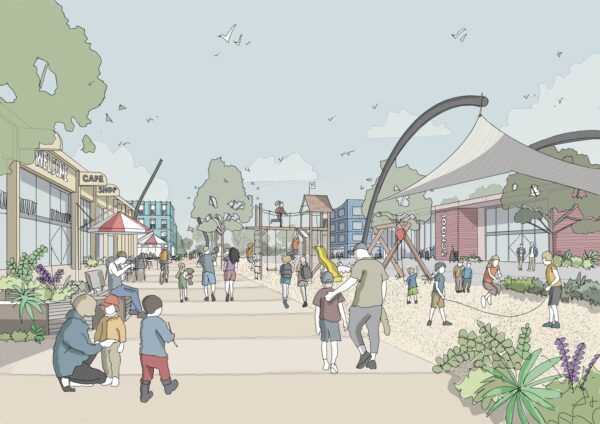
More than a housing scheme, the Barnsley West masterplan is a vision for a liveable neighbourhood that puts people at the heart of the next 25 years of development.
People-Focused Living
The Barnsley West masterplan and Design Code is about more than meeting housing need – it’s about creating an engaging, people-centred neighbourhood. To keep this at the core of the project, we developed a bespoke wellbeing and ESG-led framework – known as the “Healthspace” principles – in which every decision in the masterplan was measured against:
- Landscape-led layout that promotes a strong connection to the landscape
- Engaging with the local and wider community
- Places to meet, socialise and play
- Encourage walking, cycling and public transport use
- Safety and natural surveillance
- Responsive to microclimate and environmental context
- Identity and sense of place
The code ensures that the layout encourages sustainable travel, visibility, engagement, and most importantly, genuine utility for the local community.
As a modern approach to masterplanning, the site is deliberately landscape-led, with natural elements shaping the flow of spaces and activating intuitive wayfinding. Homes and buildings take a secondary role – naturally creating a public realm primed for engagement and community interaction.
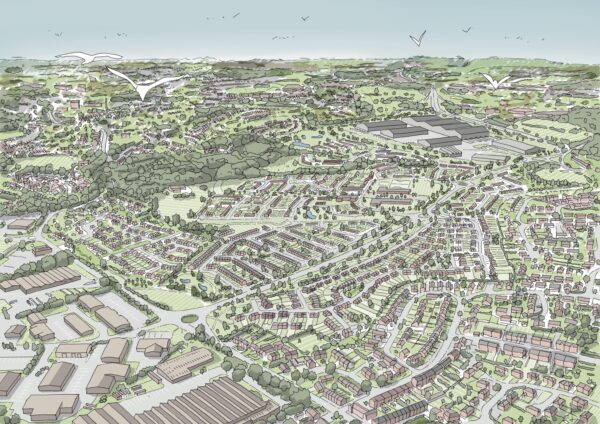
Regeneration: Growing with Purpose
Barnsley West was always intended to be more than a standalone development – it was masterplanned to grow with, and for, the wider community. From the earliest stages, the team worked to understand and respect the area’s existing character, culture and ambitions, ensuring that every decision was contextually grounded.
This commitment shaped not just the architectural response, but the very structure of the neighbourhood: parks and shared amenities were carefully located to benefit both new residents and existing community members; green links were extended to improve walkability and connectivity across surrounding communities; and a new link road was introduced to reduce congestion and increase permeability through this key part of the borough.
The design team undertook extensive research to explore Barnsley’s evolving identity and its aspirations for growth– resulting in a framework that doesn’t impose change, but integrates with the wider urban grain to enhance the region’s social, environmental, and economic landscape in line with Barnsley Council’s vision.
“Barnsley West was designed not only for the future residents of the plot, but also as a hub for the surrounding area, offering a high quality public realm accessible for all, and providing space to meet local demands for community amenities and commercial space.”
A Catalyst for Local Economic Growth
From the outset, the Barnsley West masterplan positioned economic opportunity, community infrastructure, and housing as equal principles for development. Commercial and industrial spaces are sensitively integrated with new homes and green spaces, establishing a balanced neighbourhood that supports daily life and long-term opportunity.
The inclusion of key services – from a new primary school to healthcare facilities and public transport links – is designed to attract investment, encourage enterprise, and unlock access to meaningful work and resources for both future residents and the wider region. The Design Code provides a coherent framework for multiple developers to work to the same vision, ensuring growth and delivery at scale without losing quality or direction.
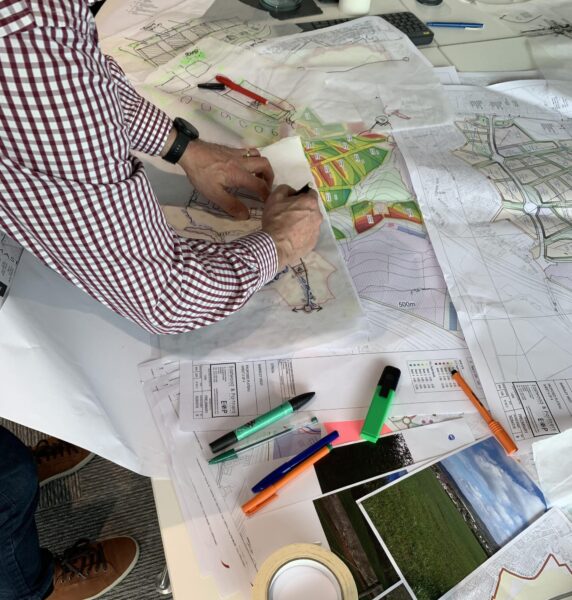
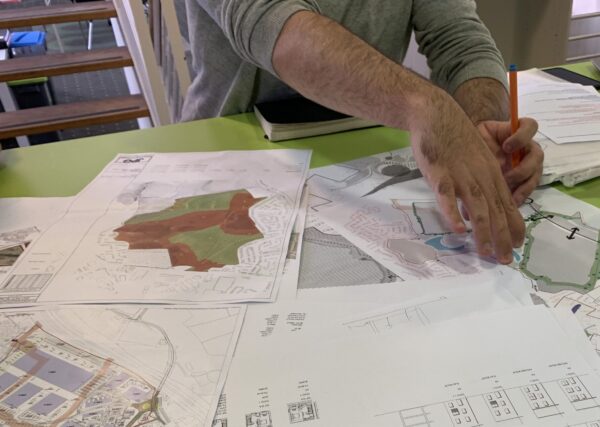
Future-Ready and Resilient
The project team viewed social sustainability and environmental sustainability as two sides of the same coin, creating a plan for long-term value.
Formerly a mining ground, the site posed complex challenges—unstable ground conditions, uneven terrain, and fragmented micro-ecosystems. Rather than performing another round of invasive disturbance, the masterplan built upon the resilience of the recovered nature.
This fundamental choice was a major factor in preserving the long-term value of the area. By conserving self-sustaining ecosystems and protecting a high proportion of established green space, we significantly reduce the need for regular upkeep efforts, and reduce the risk of a declining or dilapidated public sphere later down the line. These are not only important measures for the environment, but also crucial to ensuring that the community retains access to high quality outdoor spaces year after year.
A mix of housing typologies mimics the variety of outdoor spaces, allowing the community to grow and adapt as lifestyles and demographics change overtime. The diversity and identity embedded within the development ensures that Barnsley West is prepared to meet the needs of future generations.
Delivering on the Promise
Our team has been involved in these plans for over six years. In that time, we’ve helped shape not just a vision, but a practical framework to bring it to life — a Design Code that safeguards the project’s ambitions and helps Barnsley grow into a healthier future.
We are extremely proud that the site recently received planning approval, and that the local authority accepted the code as a legal framework for the site’s future. As the development moves forward, the code will remain the anchor: keeping people, place, and planet at the heart.
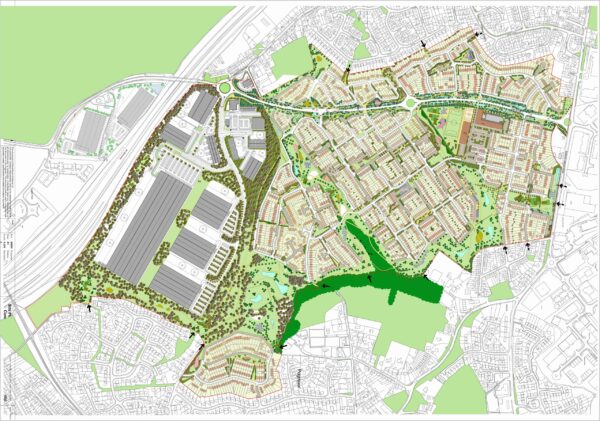
Illustrations by Dale Hickman
